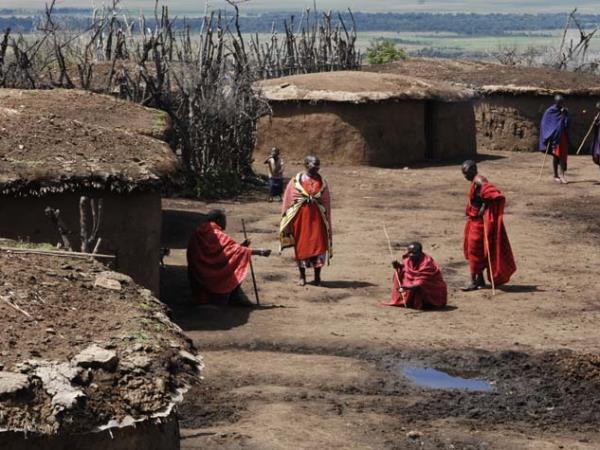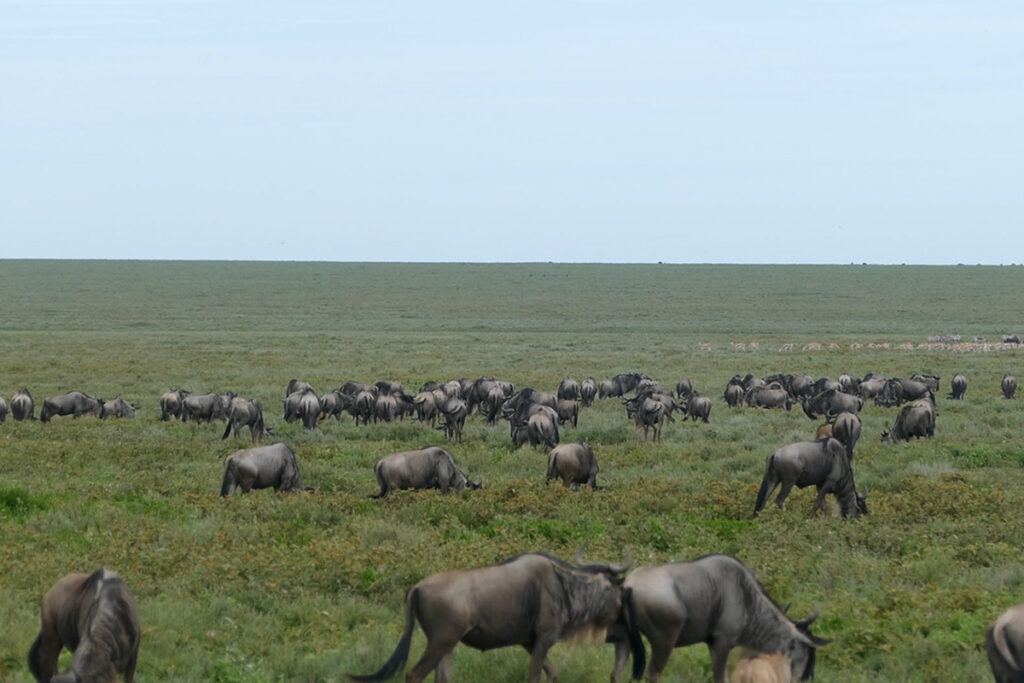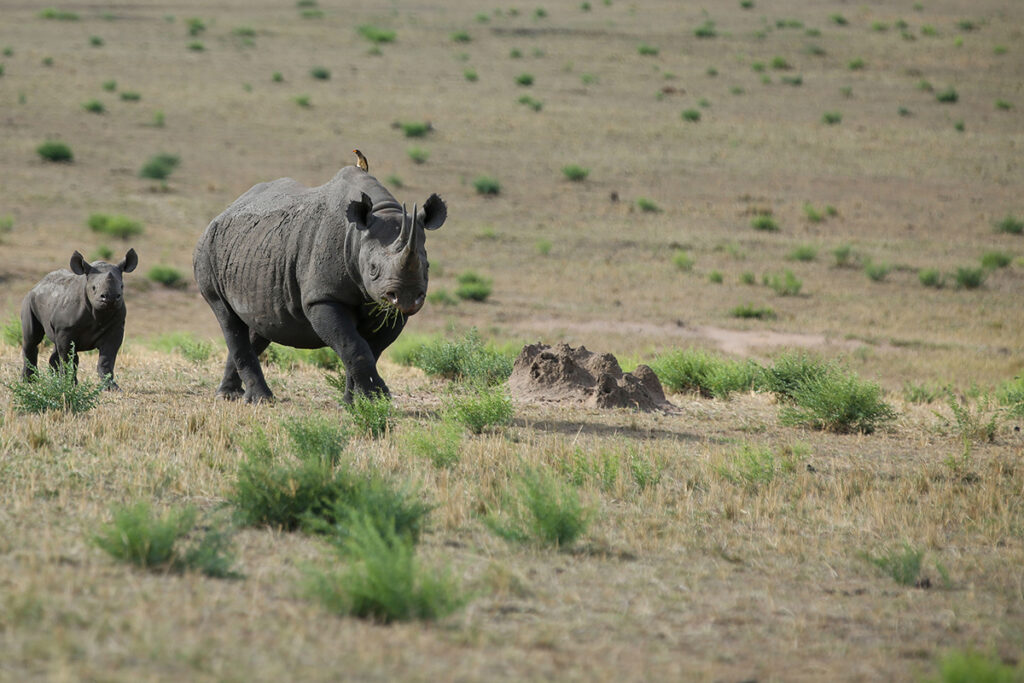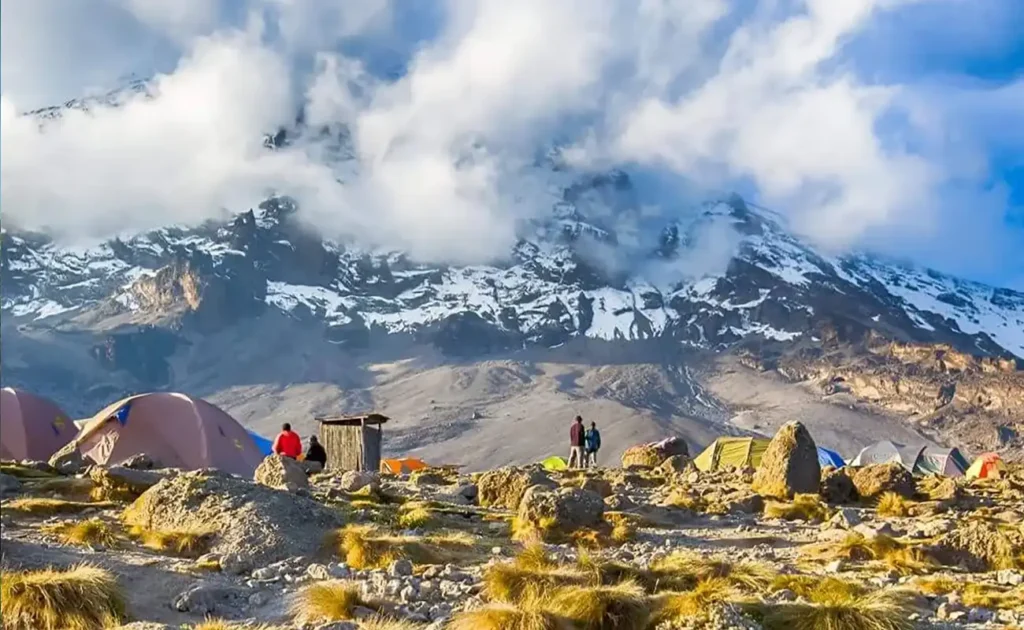
What to Expect During a Maasai Village Homestay
Staying in a Maasai village will immerse you in the traditions and daily life of the Maasai people. You will meet the villagers, who are known for their warm hospitality. They will share their rich culture and history with you, making your stay unforgettable. A typical day includes learning about their customs, exploring the village, and enjoying local food. It’s a unique chance to experience life from their perspective and gain a deeper appreciation of their way of living.
You will also participate in traditional ceremonies and dances, which are integral to Maasai culture. These events are vibrant and filled with energy, illustrating the community’s bond. You might even have the opportunity to wear traditional clothing and join in the dances. Visitors often find these experiences both fun and educational. According to this post, engaging in local customs can be a great way to connect with the community.
Understanding their semi-nomadic lifestyle is another key aspect of the homestay. The Maasai have adapted remarkably to their environment, balancing tradition and modernity. You’ll learn about their unique practices of cattle herding and how they move villages seasonally. This way of life highlights their strong connection to nature and resourcefulness. Witnessing these practices firsthand provides valuable insights into their daily challenges and resilience.
During your stay, you’ll taste authentic Maasai cuisine, made from fresh, locally-sourced ingredients. Meals often include meat, milk, and traditional herbs, offering a different culinary experience. Here is the article which details more about the ingredients and preparation methods. You might even get the chance to help prepare a meal, learning cooking techniques passed down through generations. The flavors and recipes provide a genuine taste of Maasai culture, adding another layer to your homestay adventure.
Getting Acquainted with a Unique Cultural Exchange
When you arrive at a Maasai village, the first thing you’ll notice is the welcoming atmosphere. The villagers are eager to share their way of life with you. You’ll be greeted warmly and introduced to the community. This initial interaction sets the tone for your stay. It makes you feel like part of the village from the very start.
As you settle in, you’ll start to learn about the Maasai’s rich heritage. The elders are particularly knowledgeable and love to tell stories. These tales often include the history of their tribe and significant events. Listening to these stories gives you a deeper understanding of their culture. You may find yourself captivated by their oral traditions.
Participating in daily activities is a key part of your cultural exchange. You’ll help with tasks such as herding cattle or fetching water. These activities are integral to Maasai life and provide a hands-on experience. You’ll quickly realize how these routine tasks strengthen community bonds. Your involvement makes you appreciate their teamwork and resilience.
The cultural exchange also includes trying traditional Maasai food. Meals are often shared with families in the village. You’ll taste unique dishes made from fresh, local ingredients. Sharing meals fosters a sense of unity and belonging. It’s one of the most enjoyable aspects of your stay.
Participating in Traditional Maasai Ceremonies and Dances
Joining in on Maasai ceremonies and dances is an amazing experience. These events are filled with vibrant colors and energetic movements. The Maasai wear traditional attire, which includes beautifully adorned beads and intricate jewelry. Each dance has a special meaning and is accompanied by rhythmic chants. This cultural immersion is truly eye-opening.
Visitors are often invited to participate in the dances. At first, you might feel a bit nervous, but the Maasai are very encouraging. They guide you through the steps and rhythms. By joining in, you get a real sense of the community’s spirit and unity. Your involvement makes the experience more memorable.
The ceremonies are not only entertaining but also deeply meaningful. They celebrate important aspects of Maasai life such as coming of age, marriages, and blessings for prosperity. Each ritual has a rich history and significance. Witnessing these ceremonies provides insights into the values and traditions of the Maasai. You’ll leave with a greater understanding of their cultural heritage.
You may be interested in relevant events as mentioned here. Additionally, many of the dances and ceremonies are centered around storytelling. The Maasai use dance to convey stories of their ancestors, the environment, and their gods. These stories are passed down through generations, preserving history and beliefs. Dancing becomes a powerful way to connect with their past and honor their traditions.
Understanding the Role of the Maasai in Kenyan Conservation Efforts
The Maasai play a significant role in conservation efforts in Kenya. Their semi-nomadic lifestyle contributes to the protection of natural resources. By moving their herds seasonally, they prevent overgrazing and maintain healthy ecosystems. This unique approach helps preserve the land and wildlife. Their traditional knowledge is invaluable for sustainable practices.
Maasai communities often collaborate with conservation organizations. These partnerships aim to balance environmental conservation and the Maasai’s way of life. Programs include wildlife corridors, which allow animals to move freely between protected areas. These initiatives also support the Maasai in maintaining their livelihoods. Working together ensures mutual benefits for nature and people.
Education and awareness are key components of these efforts. According to the article, the Maasai actively engage in educational programs to promote conservation. They teach younger generations the importance of preserving their environment. These programs also involve local communities in sustainable practices. Through education, the Maasai help cultivate a collective commitment to conservation.
One notable project is the establishment of conservancies. These are areas managed by local communities for conservation purposes. The conservancies protect wildlife habitats while benefiting the Maasai economically. They provide opportunities for eco-tourism, which generates income and supports conservation efforts. Visitors can learn about the Maasai’s role in wildlife protection during their stay.
The Maasai also advocate for policy changes. They work with government agencies to develop conservation policies that respect their cultural heritage. These policies aim to safeguard both natural resources and traditional practices. Such advocacy highlights the Maasai’s commitment to conservation. Their involvement is crucial for creating sustainable solutions.
Lastly, traditional Maasai practices contribute to biodiversity. Their holistic approach to grazing and farming supports varied plant and animal life. This biodiversity is essential for ecosystem health. By preserving these practices, the Maasai help maintain balanced and resilient environments. Their efforts benefit not only their community but also the broader ecosystem.
Exploring the Maasai’s Semi-Nomadic Lifestyle
The Maasai have a unique semi-nomadic lifestyle that is closely tied to their environment. They move their herds seasonally, depending on the availability of water and grazing land. This movement helps prevent overgrazing and allows the land to recover. It’s a sustainable way to manage resources. Their knowledge of the land plays a crucial role in their survival.
During their migrations, the Maasai set up temporary villages. These villages are constructed using materials like sticks, grass, and cow dung. The homes are simple but sturdy, providing shelter from the elements. This transient lifestyle requires adaptability and resilience. It’s fascinating to see how they build and dismantle their homes with ease.
The Maasai’s diet is another aspect of their lifestyle. They primarily consume meat, milk, and blood from their cattle. Occasionally, they include some grains and vegetables. This diet reflects their deep connection to their livestock. Sharing meals is a communal activity, strengthening bonds within the community. Their food practices are as sustainable as their movements.
Cattle herding is central to Maasai life, offering both cultural and economic value. Herds are led by skilled herders who understand animal behavior and environmental cues. The cattle are not just a food source but also represent wealth and social status. This system has been passed down through generations. It’s a key factor in their semi-nomadic tradition.
Education is also integrated into their lifestyle. Young Maasai learn important survival skills from an early age. These include animal care, traditional medicine, and navigation. Elders play a pivotal role in passing down this knowledge. Education ensures the continuity of their practices and cultural heritage. It’s a dynamic blend of ancient wisdom and modern learning.
Celebrations and rituals are significant parts of their semi-nomadic lifestyle. These events often coincide with their movements and seasonal changes. They involve dances, songs, and ceremonies that honor their gods and ancestors. Such traditions help maintain their cultural identity despite the physical mobility. Participating in these celebrations offers insight into their values and beliefs.
Experiencing Authentic Maasai Cuisine
Tasting Maasai cuisine is a highlight of any homestay. The food is simple yet deeply rooted in tradition. The Maasai primarily eat meat, milk, and blood from their cattle. These staples reflect their close relationship with their livestock. You might find these dishes unique and flavorful.
Meals are often prepared using fresh, local ingredients. Herbs and spices commonly used in Maasai cooking add distinct flavors. These ingredients are chosen not just for taste but for their health benefits. Sharing meals is a communal activity, strengthening social ties. It’s an excellent opportunity to engage with the community and learn cooking techniques.
One of the most fascinating aspects of Maasai cuisine is its preparation. Meat is often roasted over open flames, giving it a smoky flavor. Milk is used in various ways, including making yogurt and cheese. The process of making these foods is an art form handed down through generations. Watching and participating in food preparation gives insight into their culinary traditions.
Occasionally, the Maasai incorporate grains and vegetables into their diet. These additions come from neighboring communities or small gardens. This variety adds nutrition and new flavors to their meals. It’s interesting to see how they blend these foods with their traditional staples. Meals reflect adaptability and resourcefulness.
Guests at Maasai homestays often get the chance to help prepare food. This involvement makes the experience more interactive and educational. By cooking alongside the Maasai, you learn about their methods firsthand. It’s a fun way to immerse yourself in the culture. The shared meals also create lasting memories.
The communal aspect of dining is as important as the food itself. Meals are times for storytelling and bonding. You’ll hear tales about Maasai life and their connection to the land. These conversations add depth to your understanding of their culture. Enjoying Maasai cuisine offers more than just flavors; it offers a sense of belonging and community.
Daily Life in a Maasai Village with Sia Yangu Safari
With Sia Yangu Safari, you get an authentic glimpse into daily life in a Maasai village. Your day typically starts early with the crowing of roosters and the bustling sounds of the village waking up. The first activity involves helping to milk the cows, a vital part of Maasai culture. This hands-on experience teaches you about their reliance on livestock. Your morning continues with other chores like fetching water or gathering firewood.
As the day progresses, you may join the men as they tend to cattle or participate in community projects. Women are often busy creating beautiful beadwork and taking care of children. Hanging out with them, you’ll see how each member contributes to daily life. Such involvement offers you a comprehensive understanding of their social structure. It’s fascinating to observe how responsibilities are shared among villagers.
The afternoons might be spent learning traditional skills or listening to elders’ stories. These narratives provide valuable insights into Maasai history and beliefs. Elders share wisdom that has been passed down for generations, making for captivating storytelling sessions. You also learn about their medicinal plants and healing practices. The knowledge imparted during these times is both practical and enriching.
Meals are communal events filled with laughter and conversation. You will enjoy dishes prepared from fresh, local ingredients, reflecting deep culinary traditions. Sharing food strengthens bonds within the community. As mentioned here, it’s during meal times that you feel truly integrated into village life.
Evenings often bring more communal activities like dancing or singing by the firelight. These moments capture the essence of Maasai social life and traditions beautifully crafted through generations. Participating in these activities enhances your connection with the community even more profoundly.
Your experience in a Maasai village with Sia Yangu Safari offers a memorable blend of work, learning, and cultural exchange.
By living alongside them and participating fully in daily activities, you gain an appreciation for their remarkable way of life.
More than just visiting; it’s an intimate journey into another world where every day brings new discoveries
Social Structure and Community Activities
The social structure of a Maasai village is essential to its function and harmony. Roles are clearly defined, with specific duties assigned to men, women, and children. Each person knows their responsibilities, which helps maintain order. For example, men typically take care of the cattle, a symbol of wealth and sustenance. Women handle household chores and create beautiful beadwork to sell at markets.
Children also have important roles within the community. From a young age, they help with tasks like fetching water and tending to younger siblings. Boys learn the skills needed to become herders, while girls are taught how to manage a home. These early responsibilities prepare them for their future roles. It’s a community effort that ensures everyone contributes.
Community activities are vital in bringing people together. One of the key activities includes collective chores, where families gather to work on large projects. These tasks, whether building new huts or maintaining village paths, foster a sense of unity. Everyone’s participation strengthens the communal bond. It’s an impressive display of teamwork and cooperation.
Social gatherings and ceremonies are also a big part of village life. Events like weddings, coming-of-age rituals, and religious ceremonies are celebrated with enthusiasm. These gatherings feature traditional dances, songs, and storytelling. As a visitor, you can partake in these joyful events, gaining a deeper understanding of Maasai culture. They are moments where the village comes alive with color and sound.
In addition, education and storytelling play a crucial role. Elder members of the community often hold sessions to share their wisdom. These stories are not just entertaining but also educational. They teach moral lessons, cultural values, and historical events. Listening to these tales is both enlightening and enjoyable.
The social structure and community activities in a Maasai village offer a fascinating glimpse into their way of life. By participating in their daily routines and special events, you’ll see how each person’s role and the collective spirit sustain the community. It’s a vibrant example of how tradition and cooperation go hand in hand.
Handicrafts and Local Economies: Interaction Opportunities
A visit to a Maasai village offers a unique chance to explore their handicrafts and local economies. The Maasai are renowned for their intricate beadwork and jewelry. These handicrafts are not just beautiful; they hold cultural significance. You can watch women creating these colorful pieces, learning about the meanings behind the designs. This interaction provides a deeper appreciation of their artistry.
Purchasing these handicrafts directly supports the local economy. By buying from the artisans, you help sustain their traditional practices. These sales often provide essential income for Maasai families. It’s a meaningful way to contribute to the community while bringing home unique souvenirs. You’ll find the items carry the spirit and stories of the people who made them.
- Beaded necklaces and bracelets
- Decorative gourds and wooden carvings
- Handmade clothing and accessories
- Traditional weapons and tools
In addition to handicrafts, the Maasai engage in local markets where they trade goods. These markets are vibrant places filled with activity and color. Visiting a market allows you to see the variety of products, from livestock to fresh produce. It’s an excellent opportunity to interact with locals and learn about their trading practices. You gain firsthand experience of their economic systems.
Workshops and demonstrations are often available for visitors. These sessions teach skills like beadwork, weaving, and even traditional medicine. Participating in a workshop is both educational and fun. It gives you a hands-on understanding of Maasai craftsmanship and traditions. You might even create your own piece to take home.
Through these interaction opportunities, you connect with the Maasai on a personal level. You learn not just about their handicrafts and economy but about their values and way of life. These experiences make your visit to the Maasai village more enriching and memorable. They highlight the importance of preserving and supporting traditional cultures in the modern world.
Insights from Sia Yangu Safari Guests: Real Homestay Reviews
Many guests who have experienced a Maasai homestay with Sia Yangu Safari are quick to share their memorable experiences. Visitors consistently praise the warm hospitality of the Maasai people. They are often amazed by the genuine kindness and openness of their hosts. The ability to live as part of the community even if only for a short time leaves a lasting impression. This personal connection is frequently highlighted in guest reviews.
Guests are also enthusiastic about the hands-on activities they get to participate in. Whether it’s milking cows or learning beadwork, these experiences are often described as eye-opening. Reviewers appreciate the opportunity to engage directly with Maasai culture. They find these interactive moments educational and enriching. The memories of these activities remain vivid long after their visit.
- Welcoming hospitality
- Interactive cultural activities
- Rich storytelling sessions
- Delicious traditional meals
Storytelling sessions with the elders are another favorite among guests. Visitors often mention how these stories provide deeper insights into Maasai traditions and beliefs. The elders’ wisdom and tales captivate guests of all ages. These sessions are seen as both informative and entertaining. They offer a unique window into the rich history and values of the Maasai.
Guests frequently comment on the delicious traditional meals they enjoy during their stay. Trying authentic Maasai cuisine is a highlight for many. From roasted meat to fresh milk, the flavors are unique and memorable. Sharing these meals with the community adds to the overall experience. It’s a perfect way to bond with your hosts and fellow visitors.
Overall, the reviews from Sia Yangu Safari guests reflect a blend of admiration for Maasai culture and gratitude for the enriching experiences. Visitors leave with a newfound appreciation for a way of life that is both ancient and resilient. Their positive feedback underscores the value of such immersive cultural exchanges. These homestay reviews show that a visit to a Maasai village is not just a holiday, but a life-enriching adventure.



